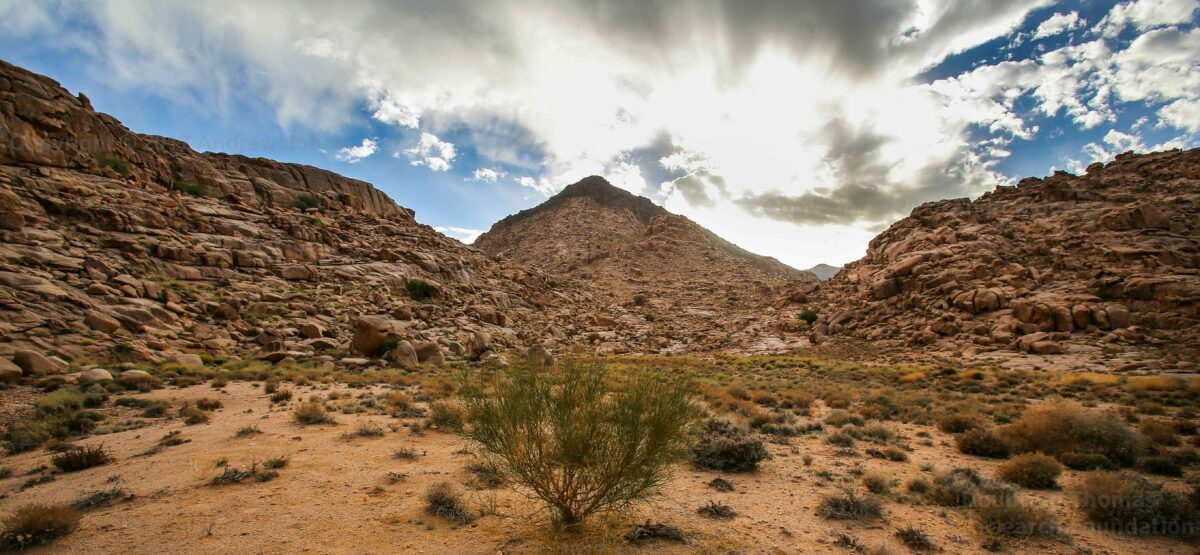The Criteria For Biblical Mount Sinai

When considering which mountain is the authentic Biblical Mount Sinai, there are some important criteria to use as a guideline. The Bible, Jewish historians, and local Saudi Arabian scholarship and tradition provide information that we can use to narrow down potential candidates.
- The Bible uses the names Sinai and Horeb almost interchangeably. The various viewpoints are that Sinai and Horeb are alternative names for the same mountain, that they are two adjacent mountains, or that Mount Sinai is a peak/mountain within a broader range of mountains or land named Horeb.
- The first century AD Jewish historian, Josephus, describes Mount Sinai as the highest peak in the region, specifically near the ancient city of Madyan. It is possible that the entire range was referred to as "Mount Sinai" or "Mount Horeb" in his time.
- Many researchers agree Mount Sinai should be in the ancient land of Midian, where Moses fled after killing an Egyptian who was beating an Israelite slave (Exodus 2, 18). It is debated whether Midian extended into the southern part of today's Sinai Peninsula in Egypt. Even so, most scholars place Midian entirely in what is today NW Saudi Arabia.
- There must be a cleft of rocks somewhere near the top of the mountain. This is the location where Moses saw God and received the Ten Commandments from God (Exodus 33-34).
- There must be a plateau partway up the mountain’s slopes, in which Moses, Aaron, Nadab, Abihu, and the seventy elders could all comfortably fit (Exodus 24).
- There must be a large, open area in which approximately 2-3 million Israelites and their flocks of animals could camp (Exodus 19).
- There must be a noticeable cave at the mountain that the prophet Elijah could have identified and used as a place of shelter (1 Kings 19).
- There must be evidence of water-flow coming down from the mountain, as the Bible describes (Deuteronomy 9).
- Near the last encampment before reaching the mountain, there must be a large open plain where Israelites could have battled the Amalekites (Exodus 17).
- Also near the last encampment, there could be a large rock with a split, matching the story of Moses striking a rock with his staff, resulting in a rush of water pouring forth to quench the thirst of the Israelites. (Exodus 17).
- As stated in criteria #3, the mountain should be near the ancient city of Midian, according to a number of historical sources. The city of Al-Bad in Saudi Arabia is believed to be where Midian once was. Many Saudi scholars have made this connection in addition to western scholars.
- There should be evidence of a population communicating in petroglyphs and/or ancient proto-alphabetic inscriptions - as evidence in Egypt has shown the Israelites had an alphabet at this time - in fact, the earliest form of alphabetic script in the world.
- There should be evidence of an altar and/or stand where the golden calf was placed and worshiped (Exodus 32).
- There should be evidence of a mass burial where the bodies of the Golden Calf worshipers were placed.
- There could be something resembling an altar below the mountain made of uncut stones, according to specifications given by God to Moses in Exodus 20.
- There could be evidence of 12 pillars near the altar (Exodus 24). These pillars may have been organized in three rows of four, as that was the pattern on the Israelite high priest's breastplate.
- There may be evidence of the fiery phenomenon at the top of Mount Sinai as described in the book of Exodus. Researchers disagree on the necessity of this criteria.
At this current point in time, the Doubting Thomas Research Foundation believes that Jabal Maqla (part of the Jabal al-Lawz mountain range in northwestern Saudi Arabia) is the most plausible location for the Biblical Mount Sinai based on the criteria. It meets each of the descriptions listed above.
